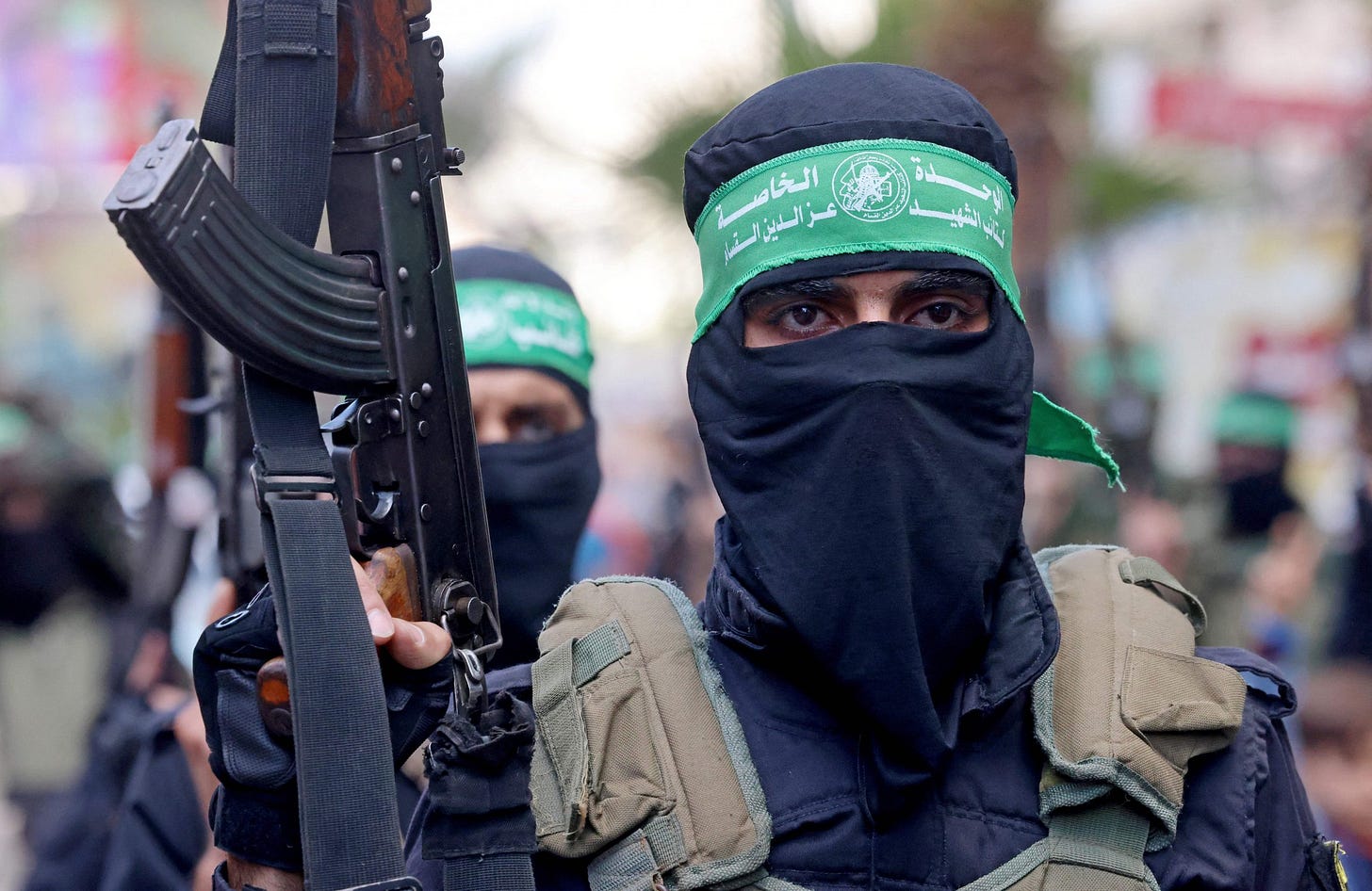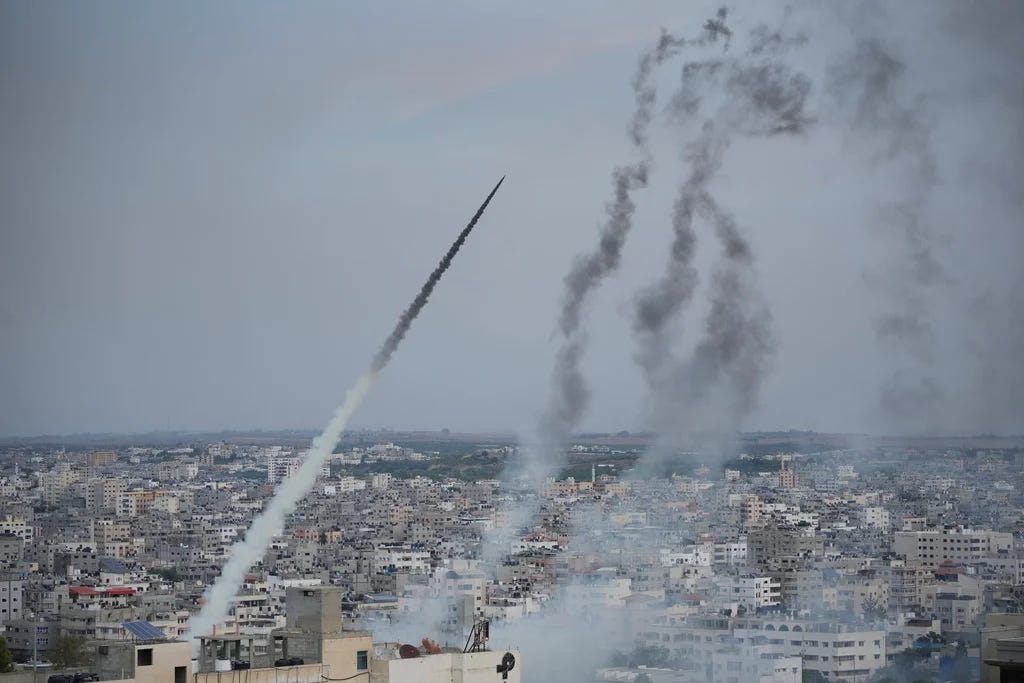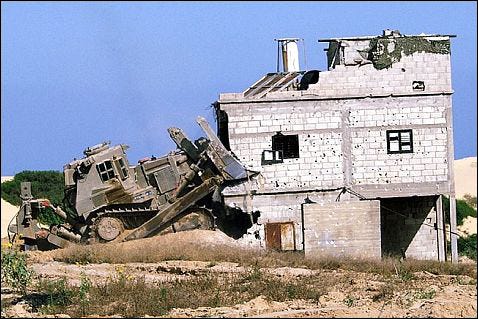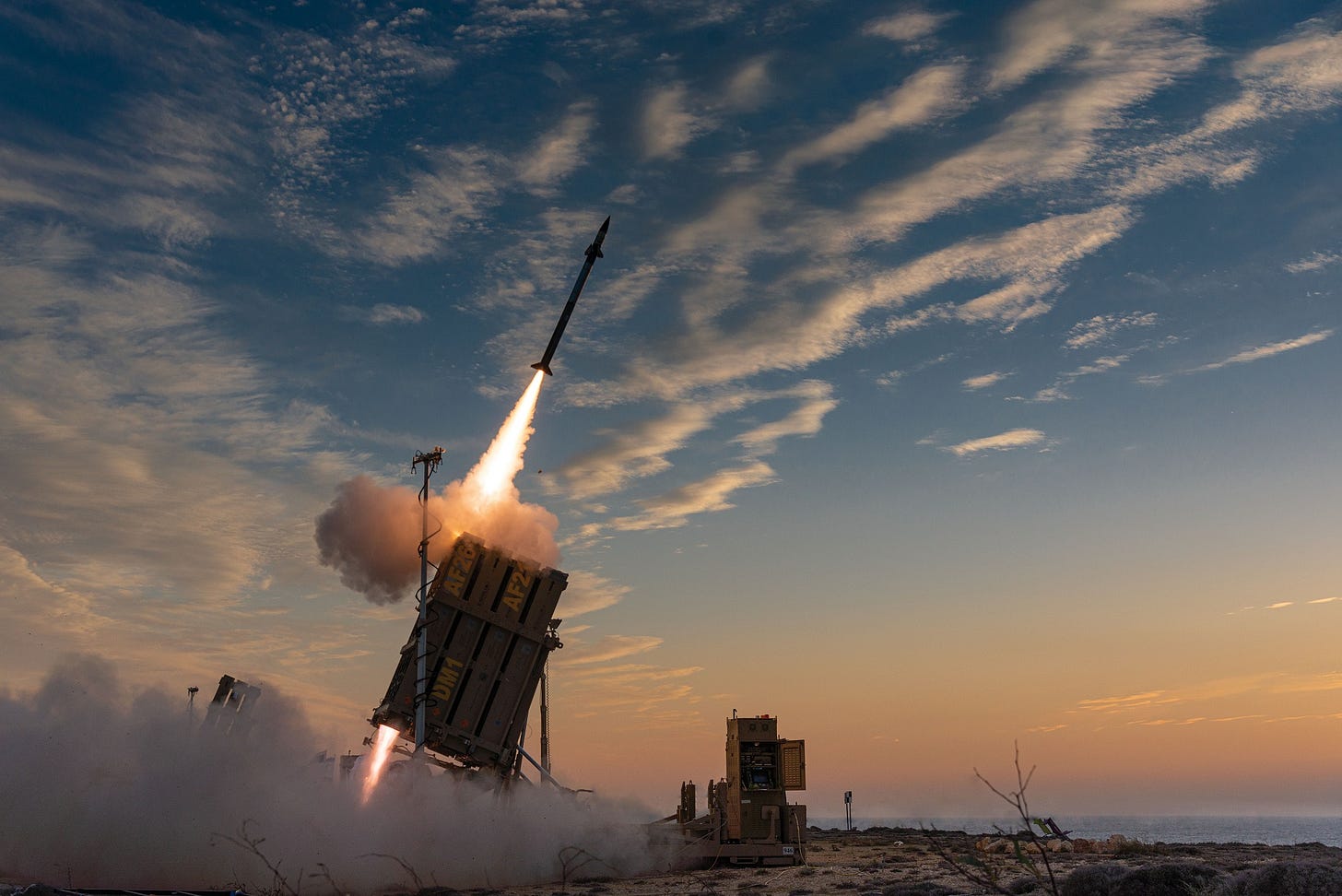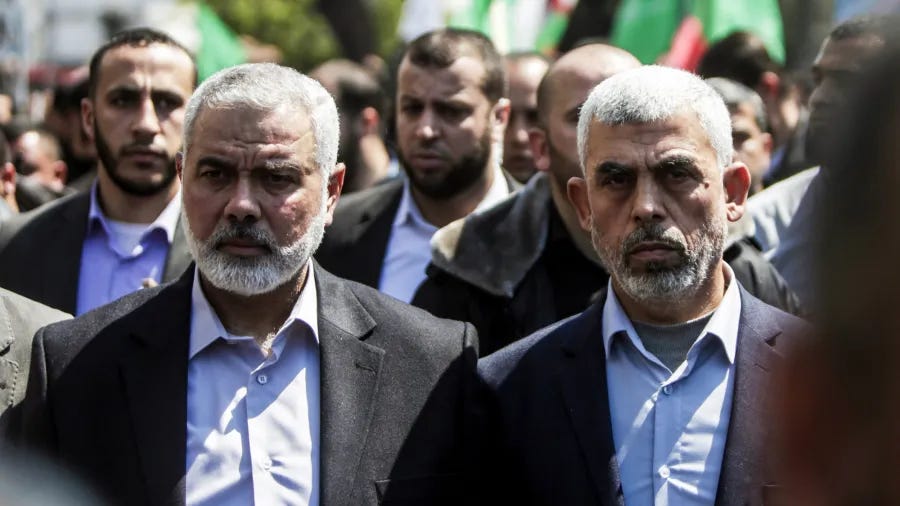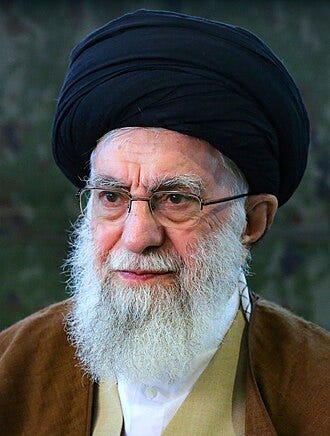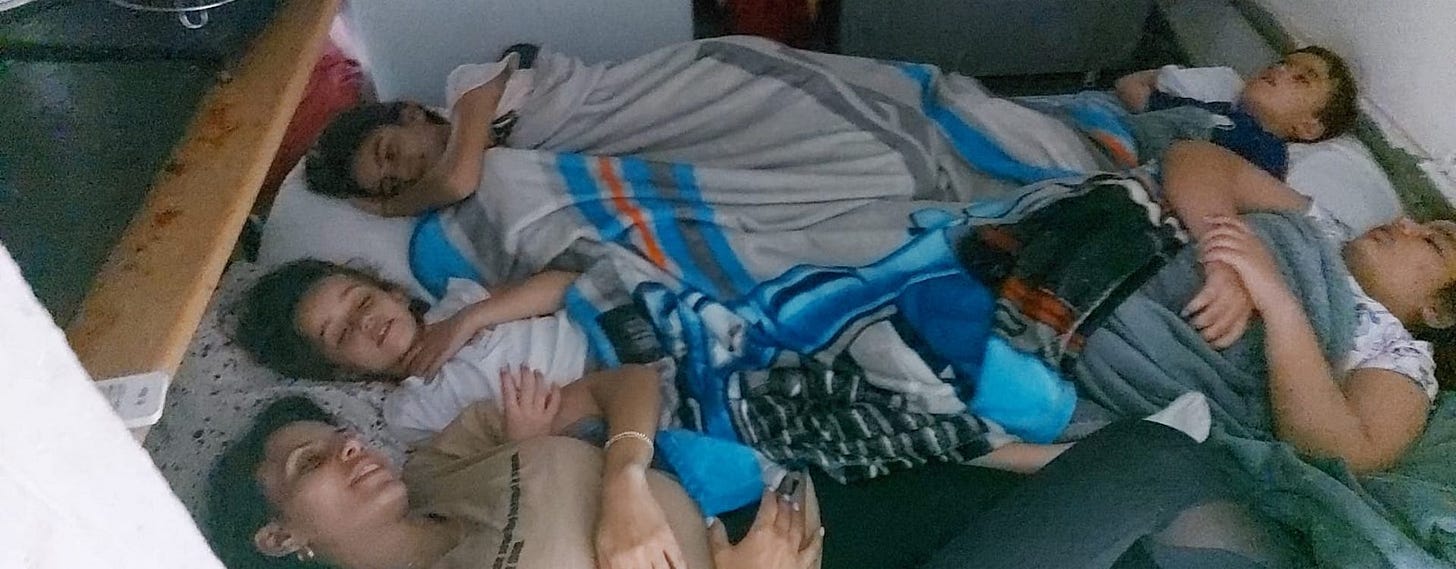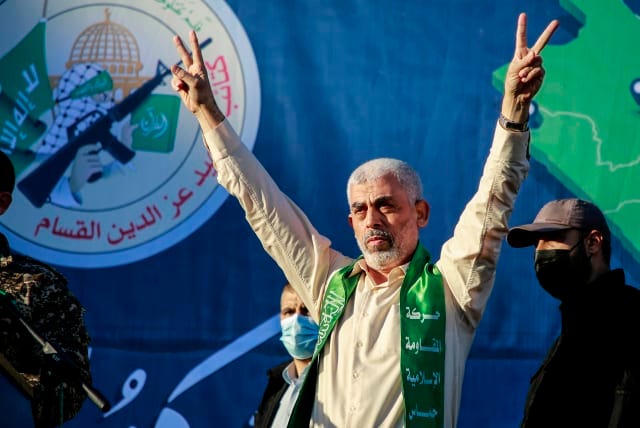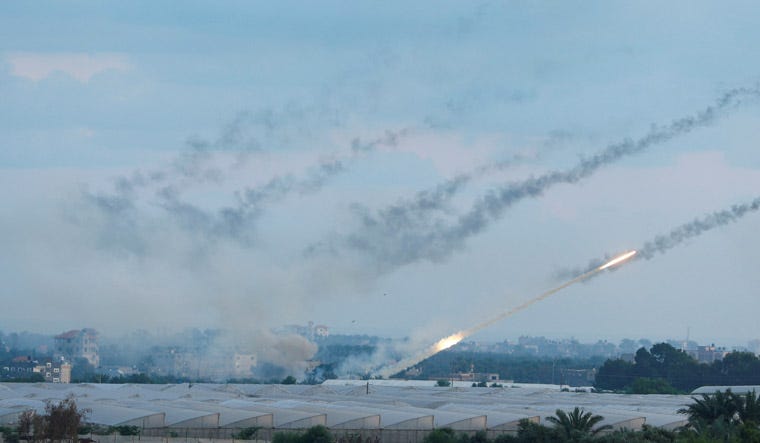In my last post I covered 2017 to 2019 as well as the Great March of Return, something that had started as a grass-roots protest by Palestinians but was quickly hijacked by Hamas as a way to attack Israel and blame them for any civilian casualties. Today I will cover 2020 to October 6th.
2020
On January 15, Hamas launched four rockets into Israel. Two were intercepted by Iron Dome and two fell harmlessly into fields. The Israeli Air Force (AIF) responded with several airstrikes in Gaza.
On January 21, three Palestinian men were shot and killed inside Israel after breaching the border fence and throwing a grenade at Israeli soldiers.
On February 6, fourteen people, most of them Israeli soldiers, were injured in a car-ramming attack in Jerusalem, the driver escaped. Hamas hailed the attack as a "practical response" to the Trump peace plan.
Also on February 6, an IDF force, including bulldozers, entered Jenin in the West Bank with orders to destroy the home of Ahmad Qunba, who had been convicted of killing an Israeli settler in a drive-by shooting in January 2018. When confrontations between the soldiers and the locals erupted, Hamas snipers fired at the soldiers, causing them to fire into the crowd. One Palestinian was killed and six others were wounded.
On February 16, two rockets were fired at southern Israel. They hit open fields and caused no injuries or damage. In response, the IAF targeted Hamas installations in Gaza.
On February 23, Hamas militant Mohammad Na’em, and another man were shot by Israeli soldiers east of Khan Yunis, while placing an IED near the border fence. Na’em was killed and his accomplice wounded by the soldiers. Bystanders tried to evacuate Na’em’s body, but an Israeli bulldozer prevented them from retrieving both the body and the wounded man. The bulldozer ran over the body, then scooped it up using its blade and lifted it into the air. The desecration of the body was caught on video, spread through social media and caused outrage around the world. In response, Hamas and Palestinian Islamic Jihad fired 21 rockets from Gaza of which 13 were intercepted by Iron Dome. In retaliation, the IAF conducted multiple airstrikes on Hamas and PIJ sites in Gaza. Israel also closed the fishing zone in the Gaza Strip as well as the Erez and Kerem Shalom border crossings. Overnight, Hamas and PIJ fired 97 rockets into Israel, with most being intercepted by Iron Dome and the rest causing no injuries or significant damage. On February 24, in response to the overnight attacks, Israel bombed Hamas targets in Gaza and PIJ targets in Syria. The Syrian airstrikes killed three PIJ members. The border crossings and the fishing grounds were reopened on February 26.
On March 27, Hamas fire one rocket into Israel. The IAF responded by bombing Hamas targets in Gaza.
On April 22, a Palestinian from the West Bank attempted to ram an Israeli Border policeman with a van, then chased after him with a knife. The assailant was shot and killed, and the officer only sustained minor injuries. Another driver in the West Bank hit an Israeli civilian and another Border Policeman. Both victims were only slightly injured, the driver escaped.
On April 22, a Palestinian stabbed an Israeli woman, outside a store in Kfar Saba. The attacker was shot and killed by an Israeli civilian.
On May 5, one rocket was fired from Gaza at Israeli communities near the border. This was the first rocket attack in 40 days.
On May 12, an IDF soldier was killed when a Palestinian hit him in the head with a large rock.
On 26 June, two rockets were fired from Gaza that caused no injuries or damage.
Overnight on June 30 Hamas conducted 25 test launches of a new rocket, with a range of 62 miles. Hamas also made an announcement that said that any unilateral annexation of East Jerusalem territory by Israel would be construed as a declaration of war.
On July 5, Hamas fired three rockets. Two hit open terrain in southern Israel, no casualties or damage were reported. A third was intercepted by Iron Dome.
On August 2, Hamas fired one rocket from Gaza into Israel, it was intercepted by Iron Dome. IAF warplanes bombed targets in Gaza in response.
On August 6, dozens of Molotov balloons were flown into Israel starting several fires. All the fire were eventually extinguished but not before burning 92 acres. In response the IAF struck several targets in northern Gaza.
On August 12, Hamas fired twelve rockets from the Gaza Strip into Israel. One landed near a house in Sderot, causing extensive damage. The IAF hit Hamas targets in Gaza in response.
On August 16, Hamas fired three rockets into Israel. Two rockets were intercepted by Iron Dome. Officials in Sderot reported that one house had been hit by shrapnel from the interception of the rocket. The third rocket hit a house in Sderot, completely destroying it. One Israeli was slightly injured by broken glass. The IAF conducted air raids in Gaza in response to the attack.
On August 26, Rabbi Shai Ohayon was stabbed to death by a Palestinian in Tel Aviv.
On August 31, Hamas announced they reached a ceasefire with Israel, after agreeing to a deal mediated by Qatar. The ceasefire ended more than three weeks of cross-border exchanges but would only last a little over two weeks.
On September 15, Hamas fired 13 rockets into Israel. Iron Dome intercepted eight but two people were injured and several cars damaged by shrapnel from the intercepted rockets near a mall in Ashdod. Six pedestrians also were injured as panicked shoppers ran for shelters.
On October 11, Israel and Hamas reached another truce agreement mediated by Qatar that will was scheduled to last for a period of six months. In return, Qatar would transfer $100 million to Hamas in a deal coordinated with Mossad head Yossi Cohen and the Coordinator of Government Activities in the Territories (COGAT). The truce did not even last a week.
On October 16, Hamas fire one rocket from Gaza. It exploded in an open field in southern Israel. I should mention at this point that when Hamas fires these rockets at Israel, air raid sirens go off in the area of the country where the rockets are expected to hit. This causes people to run for bomb shelters in those areas, sometimes causing injuries and even deaths. So all these launches are not just an inconvenience, they are life threatening situations.
On October 22, Hamas fire two rockets toward Ashkelon. One fell in an open field, while the second was intercepted by Iron Dome.
On November 14, Hamas fired two rockets toward Ashdod and Kibbutz Palmachim. There were no reports of damage or injuries.
On November 21, Hamas fired one rocket toward Ashkelon. It was intercepted by Iron Dome and caused no damage.
On December 26, two rockets fired by Hamas were intercepted over Ashkelon, causing one injury from rocket fragments.
2021
On January 18, Hamas fired two rockets were fired from the Gaza Strip. They both fell in open areas near Ashdod.
On January 20, Hamas fired one rocket in the direction of Ashkelon. It was intercepted by Iron Dome.
In March 15, 2021, Yahya Sinwar was elected to a second four-year term as the head of the Gaza political bureau of Hamas, in an election held in secret. The election made him the highest-ranking Hamas official in Gaza and the Strip’s de facto ruler. As well as the second most powerful member of Hamas after Ismail Haniyeh.
On April 15, Hamas fired one rocket toward Sderot. It landed harmlessly in a field.
On April 29, the election for the Palestinian Legislative Council, originally scheduled for May 22, 2021, was indefinitely postponed by Palestinian Authority President Mahmoud Abbas. Hamas, who were expected to do well, called the move a coup and believed Abbas had cancelled the election to avoid Hamas gaining an overwhelming majority in the Legislative Council.
On April 23, 36 rockets were fired from the Gaza Strip. 14 fell in empty places and caused no damage. Six were intercepted by Iron Dome, but 16 fell near populated areas. There were no deaths but 23 people are injured and several homes were damaged. The IAF responded with air strikes against 25 Hamas targets in Gaza.
On April 24, Hamas fired two rockets from Gaza. One was intercepted by Iron Dome, and the other fell in an open area near the border fence.
On April 25, Hamas fired five rockets from Gaza. Two was intercepted by Iron Dome and the others fell either in uninhabited areas or inside the Gaza Strip.
Operation Guardian of the Walls
The circumstances leading to Operation Guardian of the Walls go back to a parcel of disputed land in East Jerusalem. In 1870 a Jewish trust bought the land in the Sheikh Jarrah neighborhood of East Jerusalem from the Arab owners. However, the purchase is disputed by some Palestinians, who have produced Ottoman-era land titles for part of the land. When Jordan occupied East Jerusalem after the 1948 war, they expelled all Jewish residents and in 1956 settled 56 Arab families there. In 1970, after Israel captured the area in the Six Day War, a law was passed in the Knesset, that allowed previous owners to reclaim property in East Jerusalem that had been taken by Jordan without having ownership transferred. Since then there has been ongoing legal battles over both, the ownership of the land and efforts to remove the Arab families, who have refused to pay rent to the Jewish owners. In 2021 the Supreme Court of Israel was expected to deliver a ruling on whether to uphold the eviction of six Palestinian families from Sheikh Jarrah.
On May 4, Mohammed Deif, commander of the Izz ad-Din al-Qassam Brigades warned “If the aggression against our people in the Sheikh Jarrah neighborhood does not stop immediately, we will not stand idly by.” At the time, Palestinians were also protesting on the Temple Mount because police had prevented them from gathering outside the Damascus Gate and interfered in the observance of Ramadan.
On May 7, 2021, Iranian Supreme Leader Ali Khamenei, gave a speech on International Quds (Jerusalem) Day, the last Friday of Ramadan that year. Khamenei stressed that the ”treasonous” agreements (the Abraham Accords) between several Arab countries with “the Zionist regime would never change reality, and the Palestinians will never forget their brave path.” He also emphasized, “Israel is weaker than ever, because the balance of power has changed for the benefit of the Muslim world.” In the speech Khamenei hailed the “Martyrs of Resistance who sacrificed their lives on this path”. He named Sheikh Ahmed Yassin (founder of Hamas), Abbas al-Musawi (co-founder of Hezbollah), Fathi Abdulaziz Shaqaqi (founder of Palestinian Islamic Jihad), Imad Fayez Mughniyeh (co-founder of Hezbollah), and Qasem Soleimani (leader of the IRGC).
“Even after their fruitful and blessed life, with their martyrdom, each of these personalities exerted a deep impact on the Resistance. Resistance martyrs have managed to increase the internal power of Palestinian jihad by a hundred times. One day, the Palestinian youth used to defend themselves by throwing stones, but today, they respond to enemy attacks with precision missiles.”
On May 9, the Israeli Supreme Court delayed the expected decision on evictions from the Sheikh Jarrah neighborhood for 30 days, after an intervention from Attorney General of Israel Avichai Mandelblit.
At the time there was no particular tension along the Gaza border, but Hamas saw a chance to demonstrate it was defending Jerusalem. Hamas also believed that attacking Israel would bring them international attention and win further support from the Palestinian. Hamas was also motivated by Palestine being placed on the back burner during the Trump administration, and the signing of the Abraham Accords.
On May 10, Hamas delivered an ultimatum to Israel to remove all its police and military personnel from both the al-Aqsa Mosque and Sheikh Jarrah by 6 p.m. If it failed to do so, they announced that the combined militias of the Joint Operations Room would strike Israel. Minutes after the deadline passed, Hamas fired more than 150 rockets into Israel, including six rockets at Jerusalem.
On May 11, Hamas and Palestinian Islamic Jihad launched hundreds of rockets at Ashdod and Ashkelon, killing five people and wounding 93.
On May 12, Hamas also attacked an IDF jeep with an anti-tank missile. One soldier was killed and three others were wounded in the attack. Over 850 rockets were launched into Israel, with 200 falling short and landing in Gaza, wounding hundreds of Palestinians. In response to the rocket attack the IAF attacked dozens of targets destroying 33 police and security installations throughout the Gaza Strip.
On May 13, Hamas and Israeli forces continued to exchange rocket fire and airstrikes. Hamas attempted to deploy suicide drones against Israeli targets, with an Israeli F-16 engaging and shooting down one such drone. A series of Israeli strikes targeted the headquarters of Hamas' internal security forces, its central bank, and the home of a senior Hamas commander.
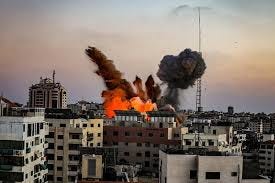
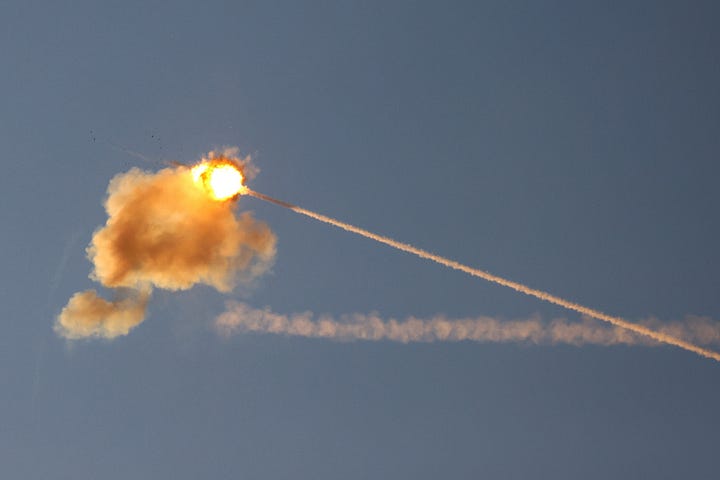
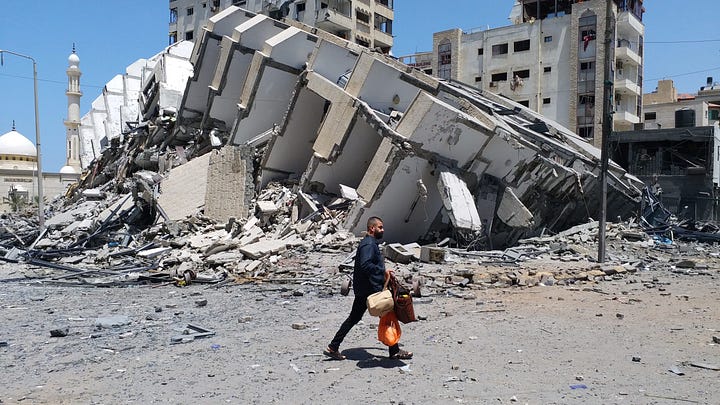
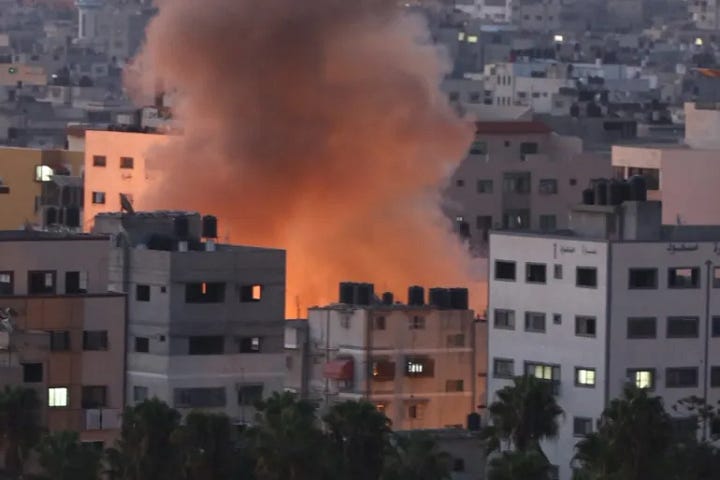
On May 14, Israeli troops were told that they would be sent into Gaza and forces were positioned along the border preparing to launch an invasion and these preparations were documented by reporters. Later that day, the IAF launched a massive bombardment of the extensive Hamas tunnel network, known as "the metro", as well as above-ground positions, inflicting heavy casualties. The threatened ground invasion had been a deliberate Israeli ruse to lure Hamas fighters into the tunnels and prepared surface positions so that large numbers could then be killed by the airstrikes. The attacks killed hundreds of Hamas personnel, as well as 20 Hamas commanders. Most of their rocket production capabilities were destroyed. However, the death toll was revised to dozens, as information came out that senior Hamas commanders had doubted that the invasion was genuine and only a few dozen Hamas fighters took positions in the tunnels. In total, 160 IAF aircraft fired 450 missiles at 150 targets, with the attacks lasting about 40 minutes.
On May 16, Israeli warplanes fired eleven missiles along a 200-yard stretch of Wehda Street in the upscale Rimal neighborhood of Gaza City. The IAF, stated, a Hamas tunnel and underground command center were the targets of the attack. However, the extent to which the underground military infrastructure extended under civilian buildings in the area had not been known. When the missiles exploded underground and destroyed the targets, it unexpectedly dislodged the foundations of the civilian buildings above them, causing them to collapse. 44 civilians were killed in the collapse. A senior Israeli military official said that the civilian death toll was unexpected and that the attack had been aimed at the center of the road to minimize collateral damage. The Israeli Air Force suspected there may have been munitions stored in the tunnels which caused the buildings to collapse.
On May 17, the Israeli Air Force carried out another series of raids against the Hamas tunnel network. 54 jets dropped 110 bombs over nine miles of underground passages. The homes of nine Hamas commanders and a home used by Hamas military intelligence were also bombed.
During the fighting, Hamas militants with anti-tank guided missiles were repeatedly spotted taking position in apartments and behind dunes, to attack Israeli forces. These teams were identified by IDF reconnaissance units and destroyed in pinpoint attacks. At least 20 such teams were destroyed by Israeli air and ground forces.


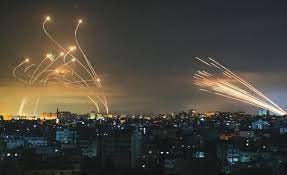
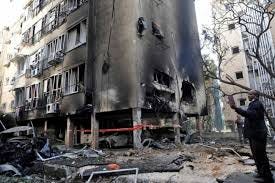
On May 20, a Hamas anti-tank missile attack on an IDF bus wounded one soldier. The attack came moments after a group of 10 soldiers had disembarked from the bus. In addition, the Israeli Navy sank a group of small unmanned submarines designed to explode under or near Israeli naval vessels or oil and gas drilling rigs. Hamas tried repeatedly to attack Israel's Tamargas field. At two least attempts to launch attacks with autonomous submarines were intercepted. In one instance, a Hamas team was spotted launching the submarine. An Israeli navy vessel destroyed the submarine while it was still close to the shore and the IAF attacked and eliminated the team which launched it.
On May 21, 2021, an Egyptian mediated ceasefire went into effect.
By the end of the campaign, over 4,360 rockets had been fired at southern and central Israel, an average of 400 per day. About 3,400 successfully entered Israel, 680 fell in Gaza and 280 fell into the sea. Iron Dome shot down 1,428 rockets detected as heading toward populated areas, an interception rate of 95%. 70 rockets hit populated areas after the Iron Dome failed to intercept them. The IDF estimated that it destroyed 850 rockets and launchers in strikes on the Gaza Strip and severely degraded local rocket manufacturing capabilities after strikes on 36 rocket production centers. In addition, Israel killed 30 senior Hamas commanders in airstrikes and another 200 fighters were killed. The ability of Israel to locate senior commanders indicated the extensive Israeli intelligence penetration of Hamas.
During Operation Guardian of the Walls 260 Palestinians were killed and another 1,948 were wounded. The Hamas rocket attacks killed thirteen Israeli civilians, (including two Arab-Israelis), and foreign nationals working in Israel. Three other Israeli civilians including an 87-year-old woman, died from injuries sustained after they fell while running to bomb shelters during attacks. 312 people were wounded.
Israel learned some important lessons about the capabilities of Hamas during the operation. For example:
Hamas possesses rockets with larger payloads and longer ranges – 70 to 100 miles, covering Tel Aviv and northern Israel.
Hamas was developing new electronic warfare capabilities to degrade the effectiveness of the Iron Dome.
Hamas has sophisticated suicide drones that were used to target offshore natural gas platform and other targets. Hamas also attempted to launch an explosive underwater drone for the first time.
Iron Dome minimized the rocket threat, air strikes destroyed the building where the electronic weapons were being developed, and the drones were neutralized. In addition, the Israeli Navy prevented attacks from the sea, and the border defenses prevented the infiltration of Hamas commandos. Nevertheless, the advancements in the arsenal of Hamas were an indication that the organization works tirelessly during lulls in fighting to develop more sophisticated means to attack Israel. This, along with Israeli complacence, contributed to the October 7, massacre.
Following the operation, Israel took steps to demonstrate that Hamas continued to locate military sites in urban areas in hopes of preempting criticism of future attacks on those targets. In a press briefing, the military identified multiple sites:
A weapons warehouse next to Shifa Hospital. It was obviously moved beneath the hospital as we would see in the days following October 7, 2023.
A tunnel used to store weapons in a Gaza City neighborhood near an elementary school.
A tunnel under a UNRWA school, an ambulance center, and a church.
A shaft that leads to a tunnel near al-Azar university that is close to a police station, an UNRWA school and headquarters, and a medical clinic.
An ammunition production facility in a residential building and more inside several mosques.
During the press conference Israeli Defense Minister Benny Gantz said:
“Today, the IDF revealed to the world examples of the depth of Hamas’s use of the civilian population, which it chooses to put in the front line of fire. “The whole world should be exposed to the crimes committed by Hamas, and exact a heavy price for that.”
On May 26, Yahya Sinwar, leader of the Hamas political wing in Gaza, denied that any of their tunnels were under civilian areas and dismissed the accusation as "baseless". However, on June 5, Sinwar admitted that Hamas did embed military command centers in civilian locations. Sinwar said "We and other factions have initiated a gradual transfer operation with the aim of relocating a number of military headquarters within the civilian population.
2021 continued
On August 21, a Hamas militant approached a border post and shot an IDF soldier at point-blank range, the soldier later succumbed to his wounds.
On September 25, Five members of Hamas are killed in the West Bank during an Israeli operation to arrest operatives suspected of planning a series of terrorist attacks in Israel.
On September 30, a 30-year-old Palestinian woman attempted to stab police officers at the Chain Gate entrance to the Temple Mount. Police shot and killed her, then briefly closed two gates in the aftermath of the attack.
On November 21, a Hamas militant opened fire in Jerusalem’s Old City, killing one and wounding four others before Israeli police fatally shot him. Police identified the attacker as a 42-year-old Palestinian, Fadi Abu Shkhaidem, a teacher at a nearby high school in East Jerusalem.
On December 3, a Palestinian resident of the West Bank repeatedly stabbed a Jewish civilian outside Damascus Gate in East Jerusalem, then attacked two Border Police officers who shot and killed the attacker.
On December 8, a Palestinian minor stabbed 26-year-old Moriah Cohen in the Sheikh Jarrah neighborhood of East Jerusalem, as Cohen was taking her children to daycare. Although stabbed in the back, Cohen was only lightly injured. The suspect was arrested later in the day at her school.
On December 16, near the Homesh settlement, three Hamas militants riding in a car, shot and killed one Israeli. They were later arrested.
2022
On January 1, Two rockets fired from Gaza explode just off the coast, one near Tel Aviv and the other close to Palmachim. The IAF responds with strikes on Hamas targets in Gaza and IDF tanks fire at Hamas military posts near the border.
On March 8, a Palestinian from the West Bank killed five persons in Bnei Brak, a suburb of Tel Aviv. The attacker, who was killed by police, was affiliated with Hamas and had previously been imprisoned for planning a terrorist attack.
On March 17, an Israeli-Bedouin man killed four persons and wounded two others in the city of Beersheba, in a ramming and stabbing attack, before being shot by an armed bus driver.
On March 28, two Arab-Israeli attackers shot and killed two Israeli Border Police Officers and injured 10 civilians in Hadera.
On April 14, a Palestinian killed three persons who were sitting outside a bar in downtown Tel Aviv. The gunman was a resident of the refugee camp in Jenin. The attacker fled to a mosque in Jaffa and was later killed by Israeli security forces.
On April 22, Israeli security forces arrested a Hamas member who had killed an Israeli in a drive-by shooting in 2015. According to Israeli authorities, the Hamas member had been imprisoned by the Palestinian Authority but had escaped to the West Bank town of Silwad, where he was apprehended.
On May 13, during Israeli Independence Day celebrations, two Hamas militants killed four persons and wounded two others, Elad. The attackers, from the West Bank city of Jenin, entered Israel illegally and killed their victims with an axe and a knife. After hiding in a nearby forest for three days, the attackers were found and arrested by Israeli authorities.
On July 16, Israeli authorities successfully disrupted a Hamas financial operation in the West Bank that lured young people to unwittingly transport cash that Hamas operatives later used to purchase weapons. Israeli authorities claimed some of the confiscated weapons had been used in terror attacks inside Israel.
On August 1, after receiving intelligence, that Palestinian Islamic Jihad (PIJ) was planning to use anti-tank missiles and snipers to target Israeli civilians near the Gaza, Israel arrested PIJ West Bank chief Bassem Saadi in Jenin. Following the arrest, PIJ released a statement calling for Israel to release Saadi and suggesting the organization was preparing to retaliate. Israel instituted a partial lockdown in the Gaza area for the next few days to protect Israeli civilians from an attack. Including, closing roads, railways, border crossings and canceling social gatherings.
In the afternoon of August 5, with a PIJ attack appearing increasingly imminent and southern Israel at a standstill, the IDF announced Operation Breaking Dawn and began to carry out airstrikes against PIJ across Gaza. Over the course of August 5-7, The IAF attacked 170 PIJ targets across Gaza and eliminated Tayseer Jabari (the northern Gaza commander), Khaled Mansour (the southern Gaza commander),and Rafat al-Zamli (the PIJ commander of rocket units). Israel also arrested 20 members of Palestinian Islamic Jihad in the West Bank. In response to the airstrikes the PIJ launched 1,100 rockets, 380 were intercepted by Iron Dome. 200 of those rockets launched were misfires and landed in Gaza.
On Sunday, August 7, an Egyptian-mediated ceasefire came into effect, ending the fighting and bringing Operation Breaking Dawn to a close. No Israelis were killed and 31 were wounded. 35 Palestinian civilians were killed, eleven in Israeli airstrikes and 15 by errant PIJ rockets. 360 Palestinians were also wounded. Besides the three commanders there were 22 PIJ fighters killed during the operation.
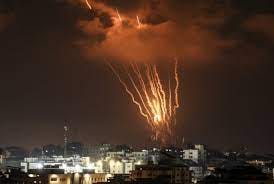
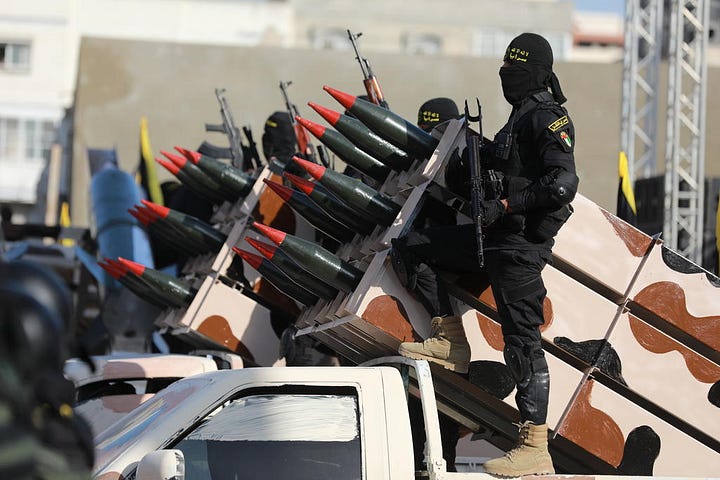
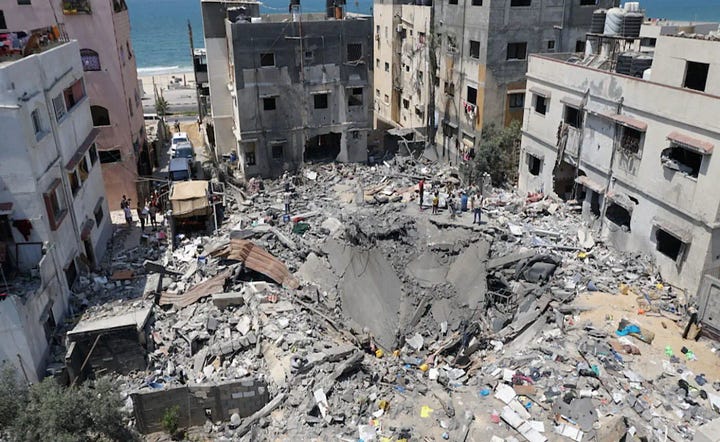
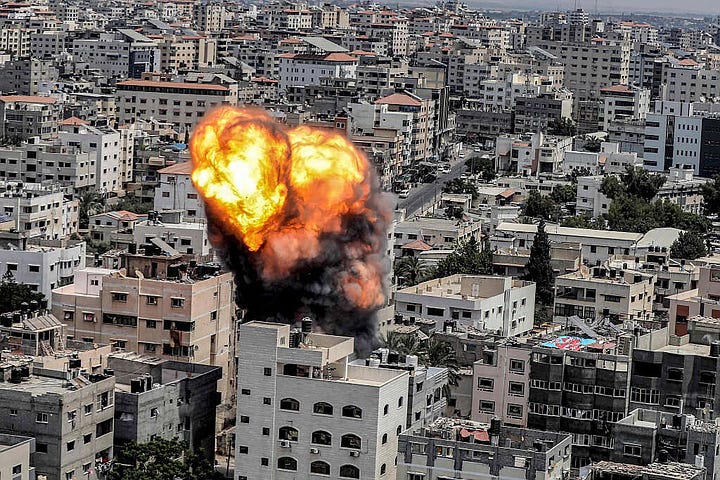
From Israel’s perspective, Operation Breaking Dawn succeeded. Israel significantly weakened PIJ, and removed the imminent threat to Israeli civilians. Hamas remained on the sidelines and the conflict did not spread to other areas, such as the West Bank, East Jerusalem, or Israel’s mixed cities.
Hamas did not join the fight or launch any rockets at Israel, even as the IAF airstrikes hit PIJ targets in Gaza. Most analysts attributed the decision by Hamas to hold their fire to the desire to see PIJ weakened. Hamas also did not want to suffer more casualties and destruction after rebuilding following Operation Guardian of the Walls. Hamas also wanted to take credit for improving living conditions created by Israel’s decision to provide more work permits to Gazans, which it could claim were obtained without making any concessions.
On October 4, one Israeli is killed in a stabbing attack near Kedumim. The attacker escaped.
On November 15, a janitor in the Ariel industrial park, stabbed seven Israelis, killing three.
On November 23, Hamas planted two bombs at a bus station near Jerusalem. When they exploded, two Israelis were killed and 22 were wounded.
2023
On January 27, after evening prayers, a Palestinian gunman opened fire on a crowd in Jerusalem’s Neve Yaakov neighborhood, killing seven and wounding three.
On February 10, A Palestinian rammed his car into civilians at a Jerusalem bus stop. Killing three people including a 6-year-old boy and his 8-year-old brother.
On February 26, two brothers from Har Bracha, were murdered when a Palestinian gunman opened fire from close range at their car while it was caught in a traffic jam on the Route 60 highway near Huwara.
On February 27, One Israeli was shot dead by a Palestinian terrorist on a highway between Jericho and the Dead Sea.
On March 9, One Israeli was killed after being shot by a Palestinian gunman in Tel Aviv.
On April 7, three Israelis were killed in a shooting attack in the Gilboa region. Later that same day one Israeli was killed when a terrorist rammed a car into people walking on the promenade at the beach in Tel Aviv.
On May 9–13, 2023, 1,469 rockets were fired at Israel, primarily by PIJ. 131 landed in Israeli territory, 291 landed in the Gaza Strip, and 39 fell into the sea. Two Israelis were killed, 27 were wounded and there was extensive property damage.
On May 30, One Israeli was shot and killed while driving on a road near his home in the West Bank community of Hermesh.
On June 30, a Hamas gunmen opened fire at a gas station in the West Bank, killing four Israelis and wounding four others.
On August 5, a Hamas gunman shot and killed an Israeli security guard.
On August 19, two Israelis were shot and killed at a car wash in the Palestinian town of Huwara by a Hamas militant.
On August 21, one Israeli was killed when a Hamas terrorist fired at her car, causing her to lose control and crash.
With hindsight I would have thought that Hamas would have gone dark in the buildup to the October 7, attacks but as we have seen that is not what happened. Did they think that Israel might think something was up, if all attacks ceased, or did they want to scale back their operations but still keep attacking Jews. Next time I will cover the October 7, Massacre. That episode will remind everyone why it is critical to Israel and the world in general to keep up the attacks on Hamas until they are completely eliminated from Gaza and anywhere else they might be hiding. As always, please share this with as many people as possible. The barbarity of Hamas is already slipping out of the minds of most Americans, but we can never forget what happened. We must support Israel on every level until the threat of Hamas is eradicated.
Chris




